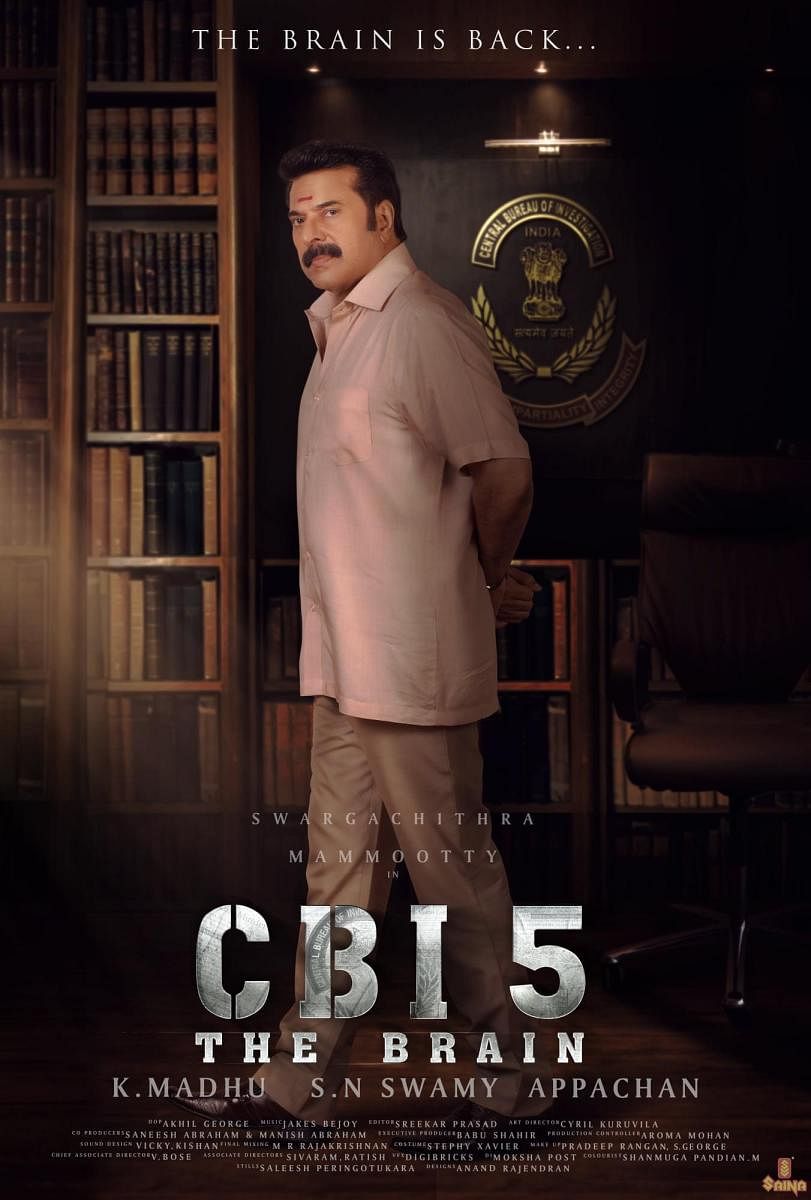
What changes in 34 years? That's a lot of time — it could mean absolute shifts in the world order and cover scientific innovation that brings the imagined future bafflingly closer. In a popular art like cinema, and in ways it is appreciated, three decades could cover multiple stylistic revisions and sensibility overhauls. In a straight-line narrative, over 34 years, the now could render the then irrelevant. Over 34 years, the popularity of a film franchise, for instance, becomes decidedly dependent on its disruptions and upgrades.
‘CBI 5: The Brain’, the K Madhu-directed Malayalam film that hit screens on May 1, is the fifth installment in what could be India's longest-running film franchise; all the films have featured the same director, writer, and lead actor. The film headlined by Mammootty is part of a series of investigative thrillers that could present a case against the importance of disruption in sustaining viewer interest that spans three decades and at least three generations.
When the first film in the series – ‘Oru CBI Diarykurippu’ — released in 1988, it was a genre-defining breakout. It did follow the minimalist traditions of some of the finest murder mysteries in Malayalam cinema, including K G George's ‘Yavanika’ (1982) and P Padmarajan's ‘Kariyilakkaattu Pole’ (1986) but it was also a fresh shot at the genre.
While its screenplay, by S N Swamy, went for a low-intensity treatment of the material, probably reflecting the arrival of arthouse-powered sensibilities in popular cinema of the mid-1980s, it was also designed as a mainstream star vehicle with Mammootty playing Sethurama Iyer, CBI DySP and lead investigator on the case that involves the death of a woman at her husband's home.
‘Oru CBI Diarykurippu’ was inspired by a CBI investigation into the murder of a hotel employee in Ernakulam, in 1983. It was, at the time, considered risky to have a superstar whose big blockbuster the previous year, ‘Aavanazhi’, was about a belligerent cop, drop the swagger, and switch to this mild-mannered, vermilion-sporting sleuth.
One of Iyer's adversaries asks about him in the first CBI film — "What's a guy raised on sambar rice and curd rice doing in a murder investigation?" Swamy could've been channeling viewers raised on hero cops who investigate murders in our films.
It has since been revealed that Swamy dropped the first sketch on the film's lead character, originally named Ali Imran, and fleshed out Iyer, based on Mammootty's suggestions.
The films keep the probes entirely professional. There's no real hint to Iyer's family, barring a phone call with his wife in the first film, a game of chess with his son in the sequel — ‘Jagratha’ (1989) — and the backdrop of his sister's home in the third film, ‘Sethurama Iyer CBI’ (2004). There are no backstories for his aides, played by Mukesh and Jagathy Sreekumar.
This is a creative choice that provides interesting contradictions with some of our police procedurals in which the investigating officer is also on his or her own personal journey with the case in hand. It does leave some of us wistful, mostly about the origin story of this nice, seemingly accessible man who is presented on screen with a rousing signature theme (by veteran composer Shyam) -- What was he like as a boy? Has the man ever cracked under pressure? What's his threshold for violence?
Any attempt to read the CBI films as a connected body of work progressing through time-appropriated bookmarks could prove tricky. One, because the four films were released in two batches separated by 15 years. The first two films came in 1988 and 1989 (‘Jagratha’, set around the death of a female actor, is arguably the most compelling, and least popular, film of the series), and the next two, in 2004 and 2005. The latest installment in the franchise comes 17 years after the fourth film, ‘Nerariyan CBI’.
The upgrades in filmmaking styles have been functional. The plotlines move on familiar arcs; the case, the state police fumbling with it, and the CBI taking over. The writing, essentially, has been about building on the key plot point — in ‘Sethurama Iyer CBI’, it's the statement of a man convicted of seven murders, that he didn't commit one of them — without many diversions.
That neither Madhu nor Swamy has had a big Box Office winner since the last CBI film and that ‘CBI 5’ has generated massive interest probably show how the franchise found its fan -- taut, standalone stories, their no-frills narration, and an iconic lead character whose timelessness also runs well with the longevity of the actor who plays him.
Madhu and Swamy have rarely spelled out the makings of the character but they are likely to argue that it's this absence of build-ups, of distracting footnotes, that makes Iyer what he is — a focused, relentless pursuer, a professional whose intelligence is never in conflict with his emotional investment in the cases.
(The author is a senior journalist based in Bengaluru).